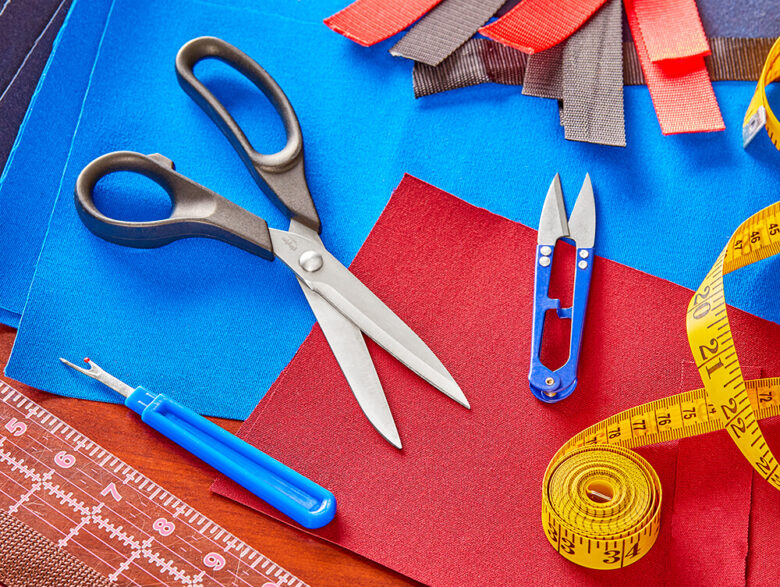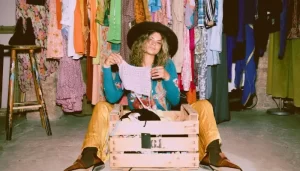Fabric craft is an ancient art that allows people to express their creativity and sense of style by creating unique clothing. Having the right materials is important for any sewing job, no matter how experienced you are or how excited you are to take on your first sewing job. In this complete book, we discuss the most important things needed to make high-quality fabric crafts.
1. Fabric
Fabric is the most important part of any work that uses fabric. Choosing the right fabric for your project is important as it affects the drape, feel, and overall look of the garment. When choosing fabrics, consider factors such as the type of job, the season, and the desired effect. Cotton, linen, silk, wool, and synthetic blends are all common materials. It is important to understand what each substance is made of and how they will change the final product.
2. Thread
Another important part of making clothes is choosing the right thread. The thread should be the same color and weight as the fabric. Polyester thread is suitable for heavier fabrics, while cotton thread is suitable for lighter fabrics. The thread you use must be strong enough to hold the seams together and thin enough to create a nice surface.
3. Needles
You’ll need a range of tools for different types of fabrics and sewing methods. A set of universal needles may be sufficient for everyday sewing needs, but for more complex projects you will need specific needles, such as ballpoint needles for multi-layer knitting or quilting needles. Having a range of needle sizes also allows them to work with different gauges of thread.
4. A Pair of Scissors
If you like to make fabrics, you should invest in a good fabric-cutting machine. To stay sharp, fabric scissors (also called scissors) should only be used for cutting fabric and not for any other purpose. A useful addition to your arsenal is a small, sharp pair of embroidery scissors that allow you to cut and trim floss with high precision.
5. Pins and Pin Pads
Pins are needed to hold the fabric together while sewing. Choose high-quality pins that will not rust to prevent damage to the fabric. A pincushion keeps your pins organized and easy to find so they don’t get lost or scattered.
6. Measuring Instruments
To make clothes that fit, accurate measurements are very important. To correctly measure the length of the fabric and the human body, a measuring tape is required. A clear ruler can help you measure and mark fabric, especially when creating a pattern or modifying an existing pattern. Having standard and metric units on hand gives you more flexibility.
7. Marking Tools
To transfer pattern lines and markings to the fabric, you need a marking tool. Most people choose tailor-made chalk, fabric markers, or water-soluble pens. Always test marking tools on a small area of fabric first to ensure they will not permanently stain the fabric.
8. A Board and An Iron
To achieve a professional look, the paper must be pressed properly. To iron seams, smooth out wrinkles, and make sure everything looks nice, you’ll need an iron and an ironing board. Soft materials should be protected from direct heat with a pressing cloth.
9. Sewing Machine
Sewing machines speed up the process of making clothes, but learning to sew by hand is still useful. Choose a machine that suits your skill level and work needs. Clean and lubricate your machine every day to keep it in good condition and ensure it performs optimally.
10. Sewing Machine Parts
Besides the sewing machine itself, a few tools make it more useful. Extra needles, bobbins, and presser feet are all important spare parts to have on hand. Keep your sewing machine’s instructions handy in case you need to make any repairs or perform regular maintenance.
11. Shapes and Patterns
A pattern is a plan to make something out of fabric. Whether you purchase a model or draw it yourself, you want to make sure they are accurate so that you get the fit and style you want. Follow the instructions carefully and make any necessary changes to meet your measurements.
12. Interfacing
When you place the insert on the wrong side of a garment, it provides structure and support to certain areas, such as the collar and cuffs. Choose a lining that has the same weight and drape as the main fabric.
Conclusion
To be good at making clothes, you need to be creative, skilled, and have the right materials. Buying high-quality thread, needles, materials, and tools will ensure that your project goes well overall. The tools in this guide give you everything you need to start all kinds of fabric projects, from simple alterations to creating entire garments. Don’t forget to keep improving your skills, trying new methods, and enjoying the process of bringing your fabric creations to life.
FAQs
1. What are the basic materials needed to make something from fabric?
Fabric, thread, needles, scissors, pins, measuring and marking tools, iron and ironing board, sewing machine, sewing machine accessories, patterns, and interfacing are some of the most important things needed to make clothes.
2. How do I choose the right fabric for my project?
Consider factors such as the type of project, the season, and the desired results. Find out what’s in cotton, linen, silk, wool, and synthetic blends so you can make an informed choice.
3. What type of wire should I use?
Choose a thread that is the same color and weight as the fabric. Polyester thread is suitable for heavier fabrics, while cotton thread is suitable for lighter fabrics.
4. Which needle should I use for which fabric?
General-purpose needles can be used for most sewing projects, but ballpoint needles for multi-layer knitting and quilting needles are better. Use different size needles for different amounts of thread.
5. Why is it important to have tools specifically designed for cutting fabric?
To stay sharp, fabric scissors (also called scissors) should only be used to cut fabric. Using it for other purposes may reduce its usefulness.
6. How do I get the exact measurements to make a garment?
Use a measuring tape to determine the length of something and measure your body. A clear ruler allows you to measure and mark fabrics correctly. Having both imperial and metric numbers gives you more flexibility.


